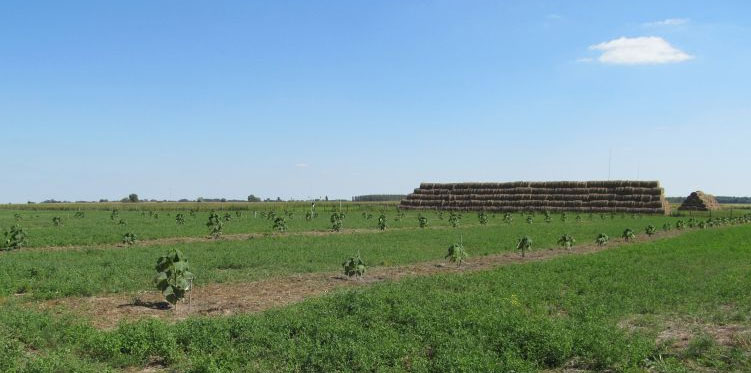
Alley cropping systems in Hungary
Description of system
It is estimated that there are about 16,000 ha of windbreaks and shelterbelts in Hungary. Although alley cropping occurs in orchards, there is not wide use of the system in arable areas. One alley cropping demonstration site is near in Fajsz, Bács-Kiskun County, in the Hungarian Great Plain. The agroforestry system consists of Paulownia tomentosa var. Continental E. in rows and alfalfa as intercrop.
Initial stakeholder meeting
The stakeholder meeting on 29 August 2014 coincided with the first National Agroforestry Forum in Hungary. One respondent considered that the positive aspects of the alley cropping system included climate moderation, crop production, income diversity, and soil conservation. Disease and weed control, project feasibility, labour and tree protection were seen as challenges. The legal implication of developing agroforestry in an arable area was a concern for many. Understanding this more clearly and supporting a national organisation to resolve the constraints was a key area of interest.
If you would like to know about the activity of this group, please contact Dr. Andrea Vityi (vityi.andrea@emk.nyme.hu).
Download the initial stakeholder report
An initial report was provided in October 2014.
Download the initial research and development protocol
A research and development protocol was produced in May 2015.
Download the system description
A progress report on the research including a system description was produced in February 2016.
Lessons learnt
The lesson learnt report by Andrea Vityi and colleagues highlight the positive effects on planting Paulownia trees on alfalfa yields, and of an alfalfa intercrop on Paulownia tree heights in Hungary. The report also explains how fast-growing Paulownia increased moisture content at the soil surface, and reduced temperatures, during hot and dry periods.
The report also describes some success in using two repellents, applied as pastes, to the Paulownia trees to deter wild animals which could damage the trees. It also describes some success in using an understory and alfalfa mulch to constrain weed growth in the tree row.